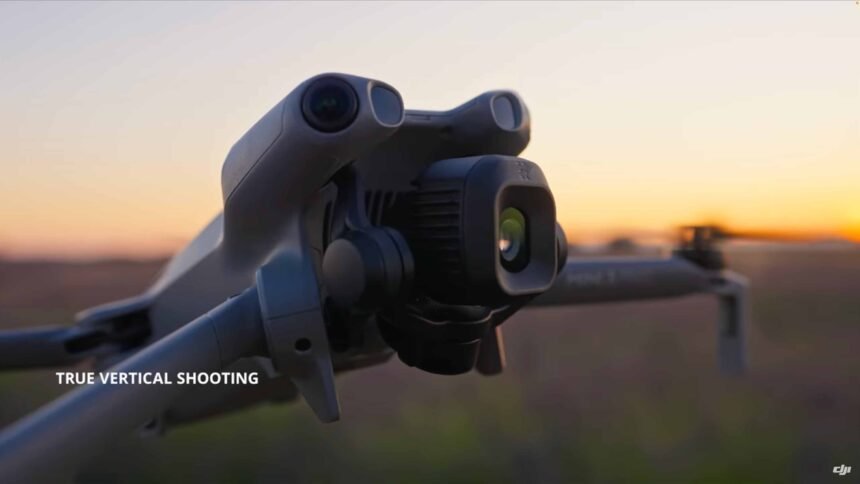Canon has expanded its EOS R mirrorless range to include two new crop sensor mirrorless cameras; the EOS R7 and EOS R10. It’s also released new RF-S lenses; the RF-S 18-45mm F4.5-6.3 IS STM, and RF-S 18-150mm F3.5-6.3 IS STM.
Starting at $1499 AUD for the R10 body and $2349 AUD for the R7 body – RRP – these new cameras will attract a whole new group of enthusiasts that may have been holding off on the EOS R system.
“Allowing a new audience of photography and videography enthusiasts to access the innovation that drives Canon’s more premium models, the EOS R7 is ideal for enthusiasts looking to upgrade their camera and push creative limits to make their images stand out,” says Brendan Maher, Senior Manager – Product Marketing at Canon Australia.
“Additionally, the camera is suited for wildlife and sports photographers that need the added reach of the APS-C in addition to the outstanding speed and tracking autofocus inspired by higher models in the range.
“With its compact size and weight, the EOS R10 is the perfect all-rounder for those considering buying a camera to capture memories on the go with family or while travelling.”
Key Features EOS R7
· 32.5 -megapixel APS-C sensor
· 15fps continuous mechanical shutter, 30fps with electronic shutter
· Deep Learning and Dual Pixel CMOS AF II
· 4K 60p and oversampled 4K 30p video from 7K
· Up to 8-stops In-Body IS (IBIS)
Key Features EOS R10
· 24.2 -megapixel APS-C sensor
· 15fps continuous mechanical shutter, 23fps with electronic shutter
· Deep Learning and Dual Pixel CMOS AF II
· 4K 60p (cropped) and oversampled 4K 30p video from 6K
· Movie Digital IS
These cameras may have smaller sensors but they are still packed with EOS R features. The EOS R7 and EOS R10 inherit the intelligent autofocus technology featured in Canon’s high performance full frame models to the APS-C format. Featuring deep learning and Dual Pixel CMOS AF II, users can keep track of subjects including vehicles, animals and people, with precise head, face and eye detection over 100% of the frame.
Offering AF in low light down to -5 EV and -4 EV respectively and operational up to f/22 with teleconverters, EOS R7 and EOS R10 make it easy to track birds in flight or athletes on the move. Both cameras feature Touch and Drag AF, whilst EOS R7 makes history as the first camera in the EOS R System to have a combined AF multi-controller and control wheel. This unlocks AF point control with fast and convenient setting and playback functions in one thumb movement or rotation of the dial.
Both have the fastest continuous mechanical shutter of any APS-C EOS camera at 15fps, as well as 30fps and 23fps electronic shutter]. The EOS R7 offers a maximum of 1/8000th second mechanical shutter speed and 1/16000th for electronic shutter. Powered by the latest DIGIC X Processor, these are highly responsive cameras capable of high-speed image processing. The addition of a 30fps RAW burst mode allows photographers and creators to work with the images captured during continuous shooting as a movie file, for simple frame selection. When pre-shooting mode is enabled, they can also capture images 0.5 seconds before the shutter button is even pressed.
In-Body Image Stabilisation (IBIS) in the EOS R7 joins the EOS R6, EOS R5 and EOS R3 in offering 8.0 stops of Co-ordinated Control IS. For the first time in EOS cameras, the IS system is used to level the horizon when the ‘Auto-level’ feature is enabled, and it also compensates for vertical shake when shooting in the newly added panoramic or panning modes.
The newly designed 32.5 and 24.2-megapixel APS-C sensors within both EOS R7 and EOS R10 are ideal for sports and wildlife photographers that need to get closer to the action. Dual Pixel RAW alongside HEIF, Compact RAW and HDR modes unlock post-production options from simple to complex.
The EOS R7 and EOS R10 can shoot video in 4K 60p or 4K 30p which is down sampled from 7K and 6K respectively. This means better quality. It can be output at HDR PQ (YCbCr 4:2:2 10-bit) in-camera, or via HDMI. The EOS R7 includes an additional 4K 60p crop mode, to extend the reach even further – perfect for filming wildlife.
Thankfully, both cameras can record past an individual 30-minute clip limit, and can shoot 4K 60p up to an hour. Both models support recording HDR PQ (YCbCr 4:2:2 10-bit BT.2020) movies that provide high dynamic range with minimal grading.
The EOS R7 is the first APS-C EOS outside of the Cinema EOS line to employ Canon Log 3 and Cinema Gamut – allowing a more flexible editing process.
The 2.36m dot electronic viewfinder has OVF view assist which helps DSLR owners make the transition to mirrorless with a familiar viewfinder experience. Customisable dials and a vari-angle LCD screen offer seamless handling, while in-camera focus bracketing and depth compositing make these cameras powerful creative tools. The EOS R7 features a 1.15x magnification viewfinder, allowing enthusiasts an immersive shooting or playback experience.
The EOS R10 has a built-in flash while the F7 has Dual SD UHS-II card slots with instant back-up, separate image and movie storage or recording different formats to each card.
Both cameras have enhanced connectivity with Wi-Fi and Bluetooth. Creators can upload content to their final destination via image.canon and control the camera via the Camera Connect app either via a compatible USB Type-C cable or wireless connection. For streamers, both cameras offer clean HDMI output for streaming as well as ability to stream to YouTube via image.canon.
Users can also now directly upload RAW files to Canon’s new Cloud Image processing service on image.canon, which applies neural network image processing to further enhance image quality from a RAW file. The EOS R7 and EOS R10 are fitted with the new multi-function accessory shoe – a first for EOS APS-C models – which supplies power and high-speed communication to advanced new accessories.
The EOS R7 and EOS R10 allow users to make use of Canon’s range of RF lenses. Adapters can also be used with EF and EF-S lenses for a seamless transition from DSLR and mirrorless. Canon is launching two new RF-S kit lenses as mentioned earlier. The RF-S 18-45mm F4.5-6.3 IS STM and RF-S 18-150mm F3.5-6.3 IS STM. Offering a 35mm equivalent focal length, with optical IS, they are perfect for shooting everything from landscapes and portraits to food and vlogs. The RF-S 18-45mm F4.5-6.3 IS STM is the ideal multi-purpose lens for everyday shooting, thanks to its compact design and lens-retraction mechanism which makes it perfect for travelling around with. With a manual focus override and leadscrew-type STM for smooth, quiet movie autofocus, it is an essential lens for everyday photography and capturing video content. A high magnification zoom lens covering wide-angle to telephoto lengths, the RF-S 18-150mm F3.5-6.3 IS STM is capable of a maximum magnification of 0.59x in MF mode to explore macro photography in everyday scenes.
Featuring Canon’s advanced optical technology that minimises chromatic aberrations and offers distortion correction, these lenses deliver crisp, sharp images. Working collaboratively with (IBIS) in EOS R7 and Movie Digital IS in EOS R10, these lenses are equipped with Dynamic IS and in-lens optical image stabilisation, enabling up to 7-stops of IS in the RF-S 18-150mm F3.5-6.3 IS STM and 6.5-stops in RF-S 18-45mm F4.5-6.3 IS STM. With a 7-blade circular aperture, photographers can create beautifully soft backgrounds and sharp subjects.
AVAILABILITY AND PRICE
LATE JUNE 2022 EOS R7 Body Only $2349 AUD RRP (Body + RF-S 18-45mm n/a) (Body + RF-S 18-150mm $2899 AUD RRP)
JULY 2022 EOS R10 Body Only $1499 AUD RRP (Body + RF-S 18-45mm $1649 AUD RRP) (Body + RF-S 18-150mm $2049 AUD RRP)
LENSES ONLY
JULY 2022 RF-S 18-45mm $569 AUD | RF-S 18-150mm $899 AUD RRP




